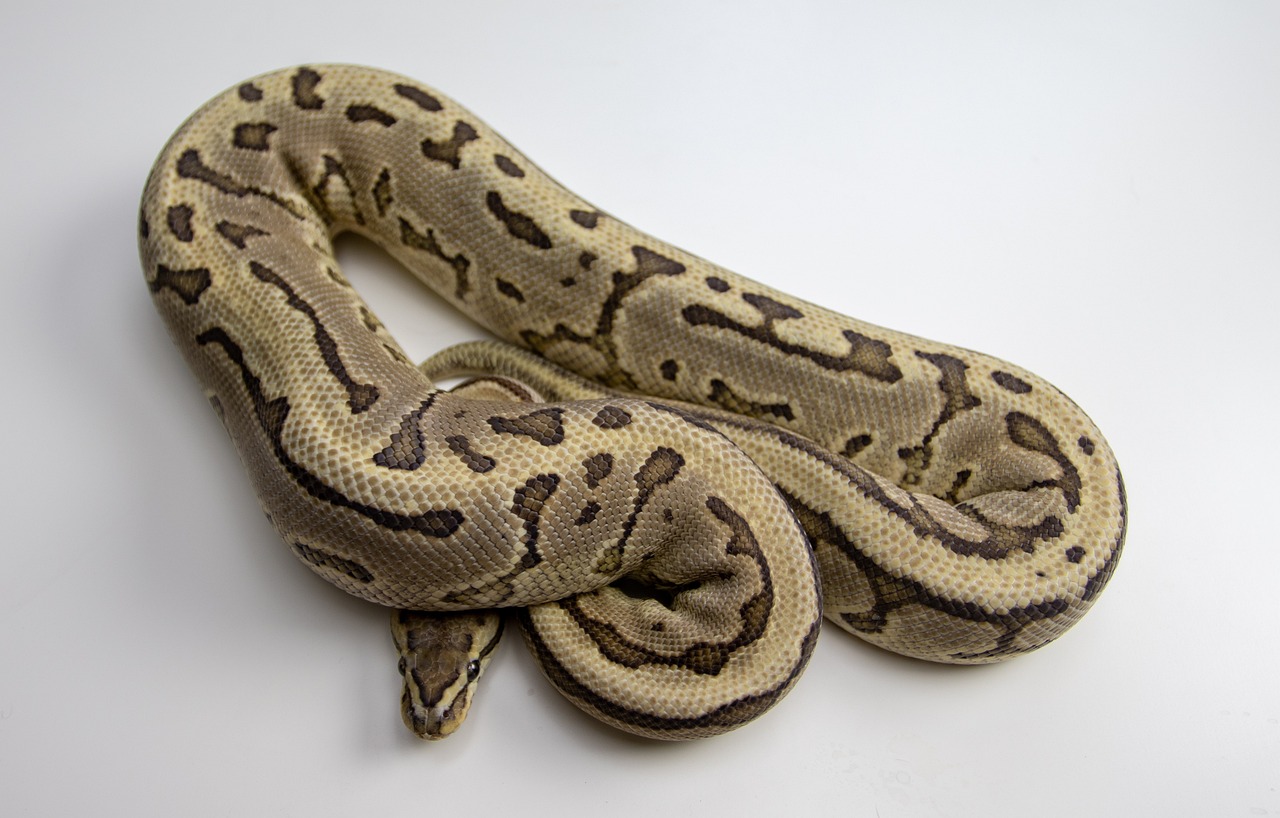Ball pythons, known for their docile nature and stunning patterns, have become popular pets among reptile enthusiasts.
As an aspiring snake owner, you might wonder, “Can ball pythons live together?” While the idea of keeping multiple ball pythons in one enclosure may seem appealing, it’s crucial to understand the complexities and potential challenges associated with cohabitation.
This comprehensive guide aims to provide expert insights and in-depth information on the topic, helping you make an informed decision about housing ball pythons together.
Can Ball Pythons Live Together?
The idea of creating a harmonious snake community might sound intriguing, but when it comes to ball pythons, living together isn’t as simple as it seems.
Ball pythons are solitary creatures by nature, preferring a solitary lifestyle. Their solitary behavior is deeply ingrained; attempting to house them together can lead to various problems.
The Territorial Nature of Ball Pythons
Ball pythons are territorial reptiles. In the wild, they stake out their own territories, and this behavior continues even in captivity.
When kept together, ball pythons might become stressed and anxious due to the constant presence of another snake in their territory.
Increased Risk of Aggression
When ball pythons are forced to share a confined space, they may perceive each other as competitors for resources, such as food and shelter.
This heightened competition can lead to aggressive behaviors, including biting and attacking one another.
Stress-Related Health Issues
Stress is a significant concern when housing ball pythons together. Increased stress levels can weaken their immune systems, making them more susceptible to infections and diseases.
Furthermore, stressed ball pythons may display abnormal behaviors, such as refusing to eat or engaging in self-harm.
Breeding Complications
If you’re considering keeping male and female ball pythons together to breed them, think again.
Cohabitation does not enhance their chances of successful breeding; instead, it can lead to aggression, stress, and potential harm to the female during mating attempts.
Proper Housing for Ball Pythons
To ensure the well-being of your ball python, it’s crucial to provide them with suitable housing. Here are some essential considerations:
Enclosure Size and Setup
A spacious enclosure is essential when it comes to housing a single-ball python. A general rule of thumb is to provide at least one square foot of floor space per foot of snake length. A larger ball python enclosure mimics their natural habitat and allows for adequate exercise.
Temperature and Humidity
Ball pythons are native to tropical regions, and maintaining the right temperature and humidity levels is crucial for their well-being.
The enclosure should have a temperature gradient, with a warm basking spot between 88-92°F (31-33°C) and a cooler side around 78-80°F (25-27°C). The humidity level should be kept between 50%-60%.
Hiding Spots and Enrichment
Ball pythons are nocturnal and secretive creatures. Providing multiple hiding spots using logs, rocks, or commercially available shelters makes them feel secure.
Additionally, offering some enrichment, like branches for climbing, stimulates their natural behaviors.
The Myth of “Harmless” Cohabitation
There’s a misconception that young ball pythons can cohabitate peacefully until they mature. However, this is far from the truth. Cohabitation at any age presents risks and challenges.
Juvenile ball pythons might exhibit aggressive behaviors as they establish their territories, leading to injuries and stress.
FAQs
Can ball pythons live together if they are from the same clutch?
No, keeping ball pythons from the same clutch together is not recommended. While they may be familiar with each other initially, they will become territorial and competitive as they grow.
Can ball pythons of different sizes be housed together?
Mixing ball pythons of different sizes is not advisable. Larger pythons might perceive smaller ones as prey, leading to fatal consequences.
What signs indicate that cohabitation is causing stress to my ball pythons?
If you notice frequent hissing, striking, or unusual hiding behavior, it clearly indicates that cohabitation is causing stress to your ball pythons.
Are there any exceptions to cohabitation for ball pythons?
While cohabitation is generally discouraged, some experienced reptile keepers have successfully housed ball pythons together for short periods. However, this requires a deep understanding of snake behavior and constant monitoring.
Can housing male and female ball pythons together prevent loneliness?
No, snakes don’t experience loneliness in the way humans do. They are solitary animals and do not require social interaction for their well-being.
Conclusion
In conclusion, the question “Can ball pythons live together?” can be answered with a resounding “No.” Cohabitation is not a suitable arrangement for these solitary and territorial reptiles.
Instead, provide each ball python with its own spacious enclosure, where it can thrive in a stress-free environment.
Remember, the health and well-being of your ball python should always be the top priority. You can ensure that your ball python leads a happy and healthy life by offering proper housing, nutrition, and care.
Related Articles:
How Often Should I Feed My Ball Python? A Comprehensive Guide
Can a Ball Python Kill You? A Detailed Guide
Are Snakes Friendly? Unveiling the Truth about These Fascinating Creatures

